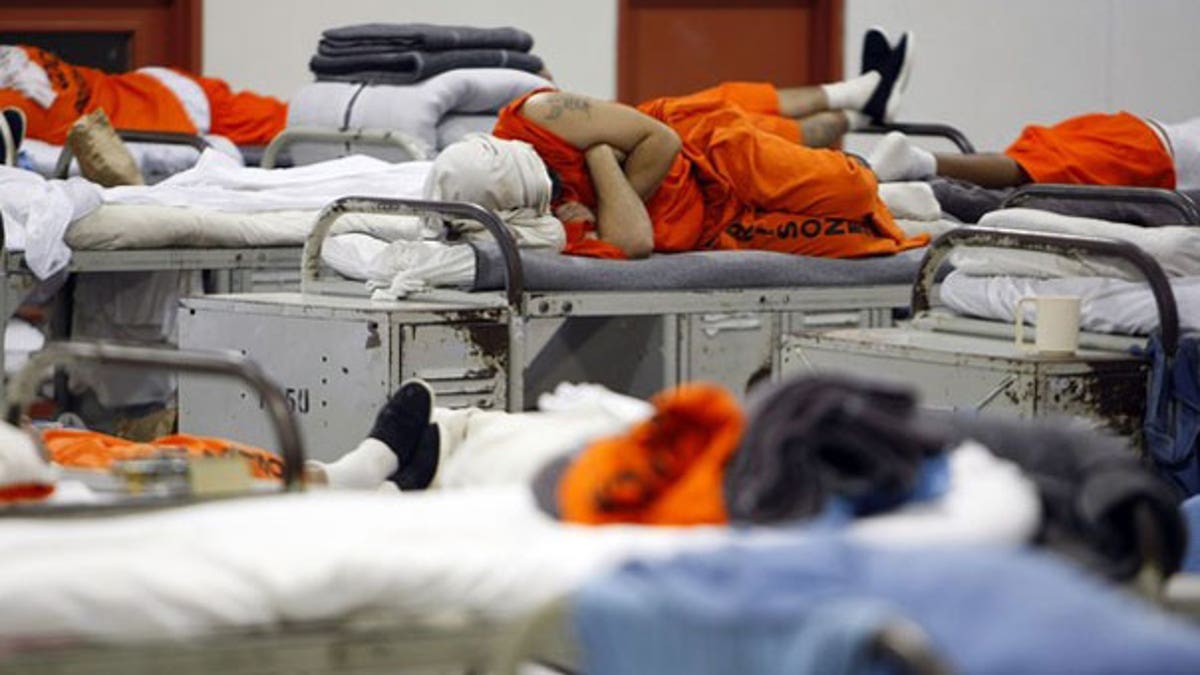
With the 2010 Census about to get underway, lawmakers and activist groups in several states are making a hard push to change the way head-counters track a population that has the power to shape the makeup of local governments across the country -- inmates.
Inmates can't vote in most states. But they do have a big impact on the way districts are drawn, since the lawmakers who do the drawing use Census data that counts prisoners as residents of the towns where they're incarcerated -- instead of the towns where they used to live.
That means rural areas with large prisons can be listed as similar in size to more urban areas without prisons, in turn giving rural communities more representation.
Critics of the method say it creates an unfair disparity and want it changed before the 2010 Census data is used to redraw districts again.
"Because there's so many people in prison, this matters," said Peter Wagner, executive director of the Prison Policy Initiative, which studies the way the Census counts prisoners.
New York state has one of the most active networks of groups trying to change the law. New York lawmakers joined with a state coalition and the Rev. Al Sharpton last week to announce a new organizing campaign on the issue.
The campaign is trying to win support for a bill, sponsored by state Sen. Eric Schneiderman and Assemblyman Hakeem Jeffries, that would count New York prisoners as residents of their home communities.
"The states do not have the ability to impact the way the Census conducts its count nationwide. However, we can influence the manner in which any individual state utilizes that information," Jeffries told FoxNews.com. "It is unfair to count them as residents in the county of incarceration."
Sharpton, in a written statement, called the method an "absolute injustice."
According to the Prison Policy Initiative, seven New York state Senate districts meet the minimum population requirements only because they count inmates as residents.
However, lawmakers from those districts argue that counting the prisoners in the districts where they're incarcerated only makes sense and is only fair to the other people who live there.
"It's a New York City centric-perspective and it becomes very myopic," Republican state Sen. Joseph Griffo said of the push to change the way prisoners are counted. He said the prisons have an "impact" on the communities -- on health care facilities, on the way police operate -- and that without that population counted, the surrounding areas might not qualify for certain state and federal grants.
"Those infrastructure costs fall on local taxpayers," said Jeff Bishop, spokesman for Republican state Sen. James Seward. "This is a move by downstate politicians to try and dilute the upstate population and increase their numbers."
This is hardly the first time activists and lawmakers have drawn attention to this issue.
The Census Bureau issued a report in early 2006, at the request of Congress, examining the possibility of counting prisoners as residents of their home towns. The study gave several reasons why, according to the bureau, that would be a bad idea.
The report concluded that doing so would be expensive, time-consuming and not necessarily accurate. The Census Bureau claimed that prison records on inmates' home addresses are "incomplete, inconsistent and not updated," and estimated that the cost of interviewing inmates individually to get that information would be $250 million.
"Our study raises concerns that this change would result in decreased accuracy for a possibly large proportion of millions of individuals," the study said. The Census Bureau also claimed that counting prisoners as residents of their home towns would be "inconsistent" with how the bureau counts other "group" populations like military personnel.
Wagner, though, disputed the report, calling it a "joke." He said the work would be "manageable."
Other states besides New York have witnessed political oddities due to the way prisoners are counted.
In Anamosa, Iowa, Danny Young was elected to the City Council in 2006 with two write-in votes from his wife and neighbor. Two votes were enough to carry Young into office, because 96 percent of the district was made up of non-voting prisoners in the state's largest penitentiary.
As the 2010 Census gets underway, state governments from New York, Maryland, Florida, Illinois and Wisconsin all are considering bills that would change the way prisoners are counted.
U.S. Rep. Gene Green, D-Texas, has also introduced a bill in Congress to count inmates as residents of the communities they lived in before entering prison.
Under current policy, most states use the Census data as is when drawing districts, though dozens of counties just ignore the prison populations altogether.
Wagner said it's too late for the Census Bureau to change its method before the 2010 head count, which begins in March. But he said the hope is that individual states will change the way prisoners are counted in the near-term, and potentially pressure the Census Bureau to change its policy nationwide a decade from now.




